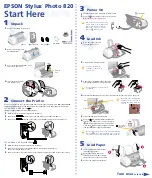
31
Inserting transparency film
Inserting envelopes
When inserting envelopes in the bypass tray, set them in the orientation shown below.
Example of loading a envelope
Only the address side of an envelope can be printed on or copied on. Be sure to place the address side face down.
Important points when using envelopes
• Do not print or copy on both sides of the envelope. This may result in misfeeds or poor print quality.
• Restrictions apply to some types of envelopes. For more information, consult a qualified service technician.
• Some operating environments may cause creasing, smudging, misfeeds, poor toner fusing, or machine failure.
• Do not use the following envelopes:
Envelopes with metal clasps, plastic hooks, or ribbon hooks; envelopes closed with string, envelopes with windows
or backing, envelopes with an uneven front surface due to embossing, double-layer envelopes, envelopes with an
adhesive for sealing, hand-made envelopes, envelopes with air inside, envelopes with creases or fold marks, torn
or damaged envelopes
• Envelopes with an incorrectly aligned corner gluing position on the back cannot be used as creasing may result.
• Print quality is not guaranteed in the area 13/32" or 10 mm around the edges of
the envelope.
• Print quality is not guaranteed on parts of envelopes where there is a large
step-like change of thickness, such as on four-layer parts or parts less than 3
layers.
• Print quality is not guaranteed on envelopes having peel off flaps for sealing the
envelopes.
• Use an Océ-recommended transparency film. When inserting
transparency film in the bypass tray, the rounded corner should be at
the front left when the film is oriented horizontally, or at the far left
when the film is oriented vertically.
• When loading multiple sheets of transparency film in the bypass tray,
be sure to fan the sheets several times before loading.
• When printing or copying on transparency film, be sure to remove
each sheet as it exits the machine. Allowing sheets to stack in the
output tray may result in curling.
Oriented
horizontally
Oriented
vertically
Can be used
Cannot be used
















































